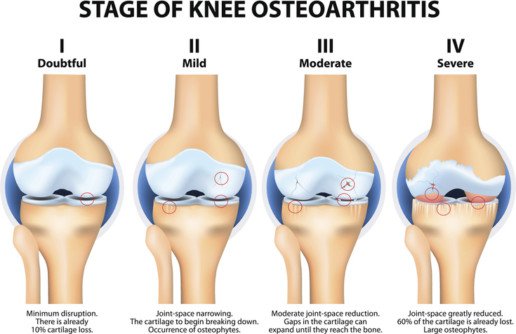
What Exactly Does 'Bone-On-Bone' Mean?
We hear that phrase and shudder at the idea, but aren’t quite sure why it sounds so painful. What exactly is “bone-on-bone”? How is it diagnosed? What can be done to fix it? Dr. Aribindi and Dr. Park are here to explain.
Osteoarthritis is the formal term for a “bone-on-bone” condition. In a healthy joint, the ends of your bones are covered in smooth, glass-like cartilage and cushioned with synovial fluid to reduce friction. This cartilage and fluid help your joints bend and move without pain, sliding smoothly against each other seamlessly.
When osteoarthritis occurs, that slick cartilage becomes roughed up, then wears away completely, leaving you with no cushioning in the joint, with bone rubbing against bone.
Osteoarthritis can cause:
- Pain in the joint during or after movement
- Stiffness when you get up in the morning or after sitting for a long period
- Tenderness and/or warmth when you touch or push on the area
- Grating, crinkling or crunching sounds with movement
- Loss of mobility and flexibility, making it difficult to sit, stand up, kneel or walk
- Bone spurs, or osteophytes, may form around the joint
While age is the biggest factor in the development of osteoarthritis, there are other factors:
- Sports injuries or accidents
- Obesity or being overweight
- Repetitive motions or stressors, especially during work hours
- Family history and heredity
- Bone deformities
- Having rheumatoid arthritis or metabolic disorders
- Gender, as women are more likely than men to develop osteoarthritis
Osteoarthritis can be accurately confirmed through imaging tests; x-rays and MRIs. X-rays don’t show cartilage damage, but they will show that the space between your bones has narrowed. In more complex cases, an MRI will be ordered to assess any cartilage or soft tissue damage. We may extract fluid from your joint to eliminate the possibility of gout or infection.
There is no cure for osteoarthritis and no way to reverse or permanently halt the destruction of cartilage.
Happily, a diagnosis of osteoarthritis doesn’t immediately mean a joint replacement. You may be prescribed at-home exercises or referred to physical therapy to strengthen the muscles around your joint, helping to relieve pain and to increase flexibility to enhance mobility. We may recommend injections to coat your joints in a lubricating fluid or reduce inflammation. A brace, either to take weight away from the joint or to provide support to the entire joint, may be considered.
Losing weight can significantly decrease joint pain, especially from the hips to the toes. Losing just 10 pounds can ease 15 to 50 pounds of pressure from your lower joints, depending upon your activity.
When you are in severe pain and your quality of life is drastically curtailed by your loss of mobility, talk to us about surgical options. According to recent research, nearly 92% of total knee replacement patients were satisfied with their new joint, the pain relief experienced and their return to daily activities.
Are you 'bone-on-bone' - or do you have questions about your joint pain? Clickhere to schedule an appointment. Dr. Aribindi or Dr. Park will perform a thorough examination, give you an accurate diagnosis and discuss ways to relieve your joint pain.

